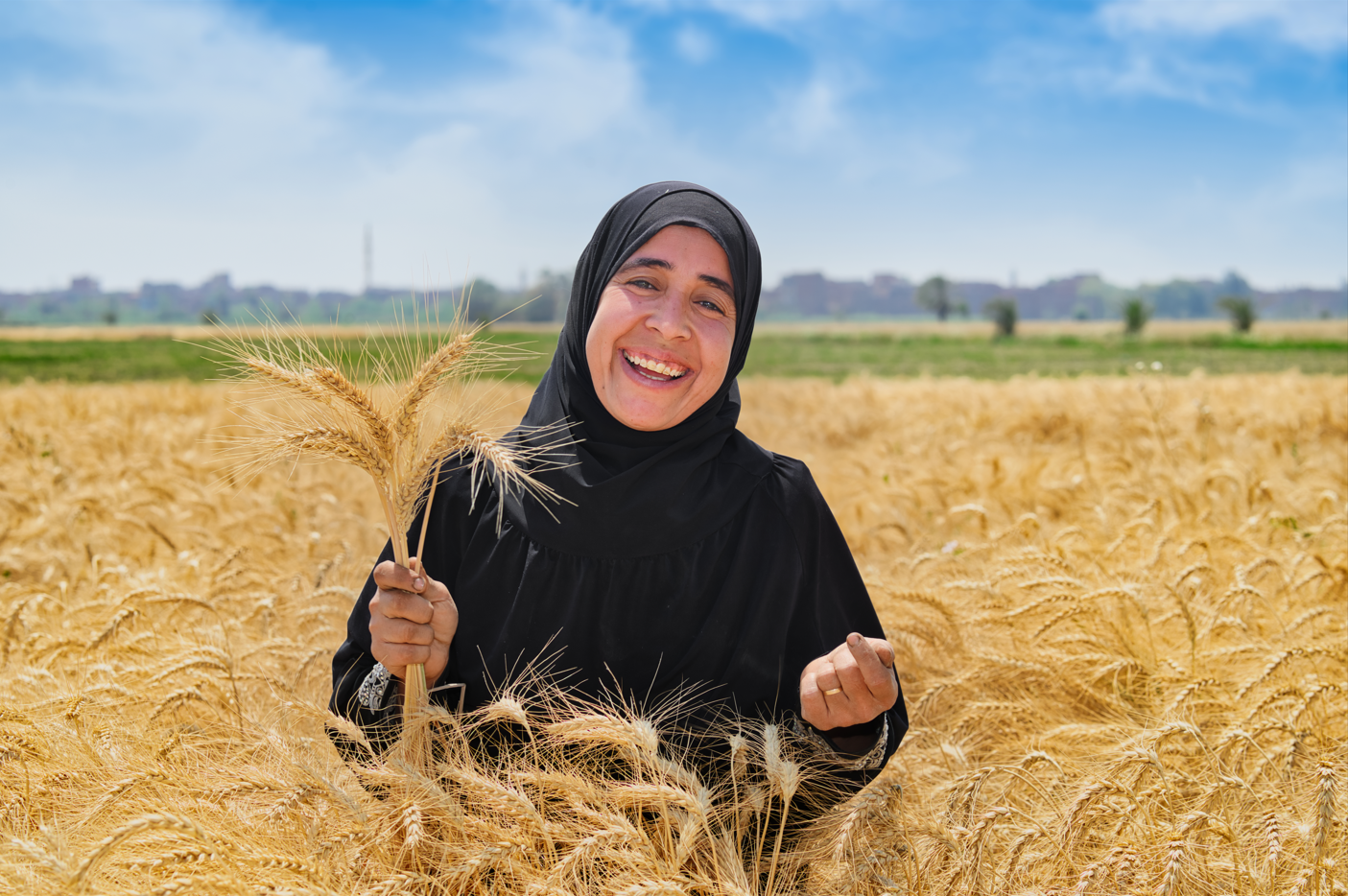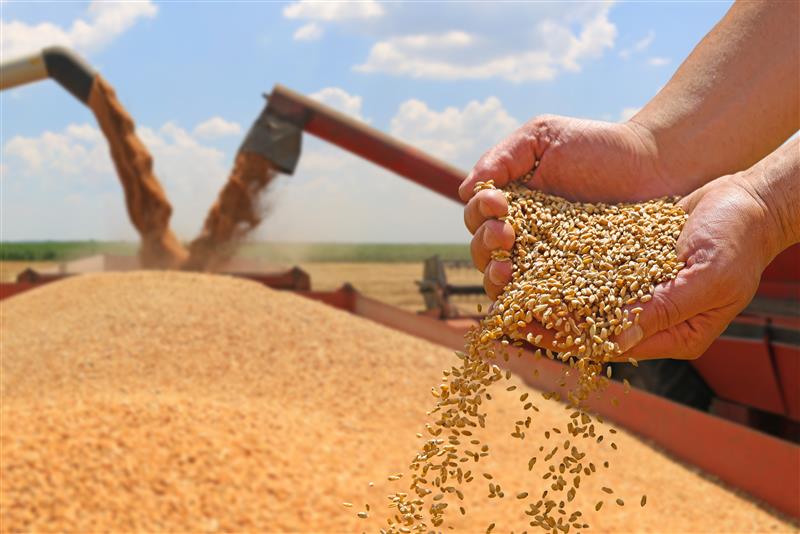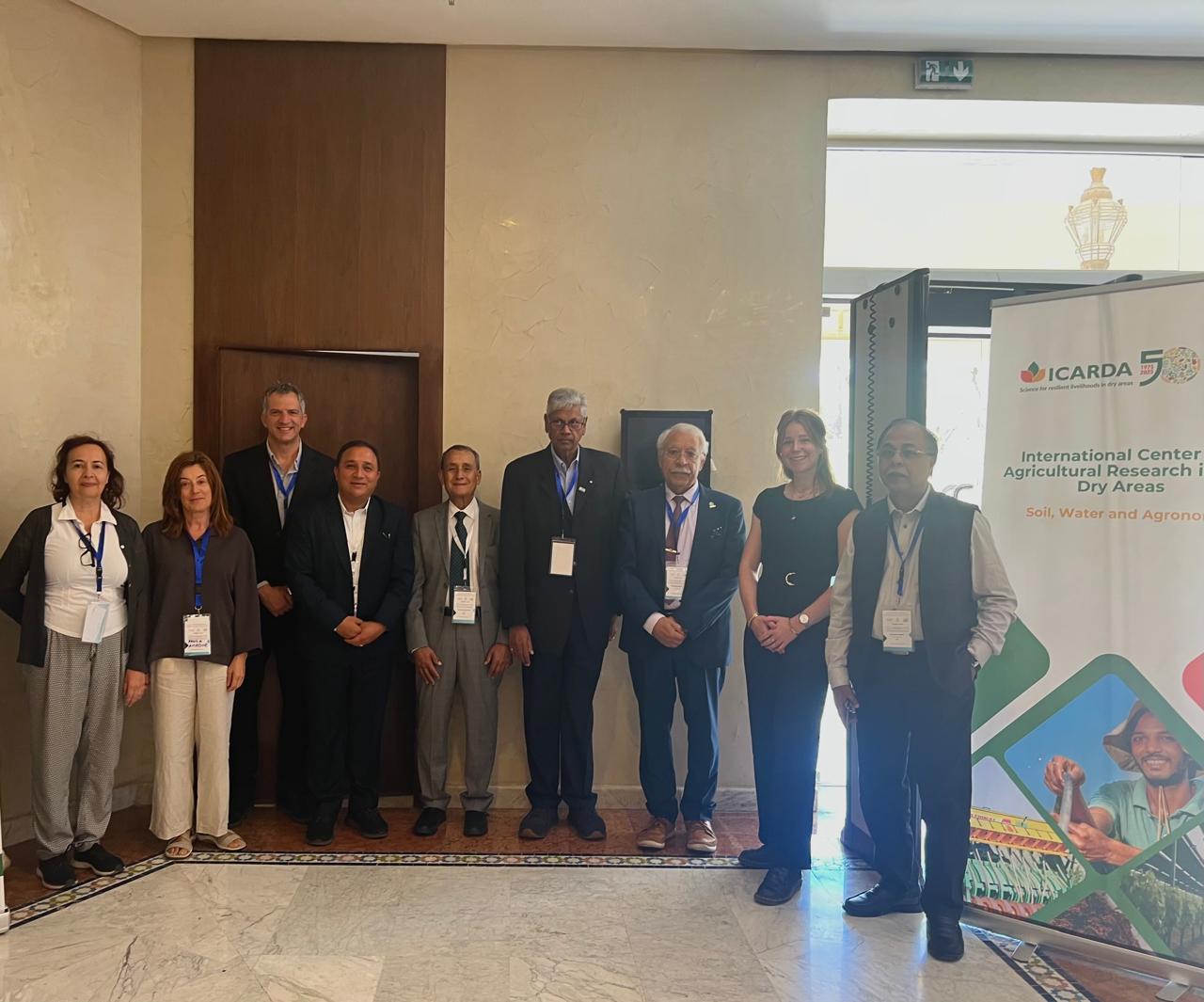Inside ICARDA’s Integrated Desert Farming Systems
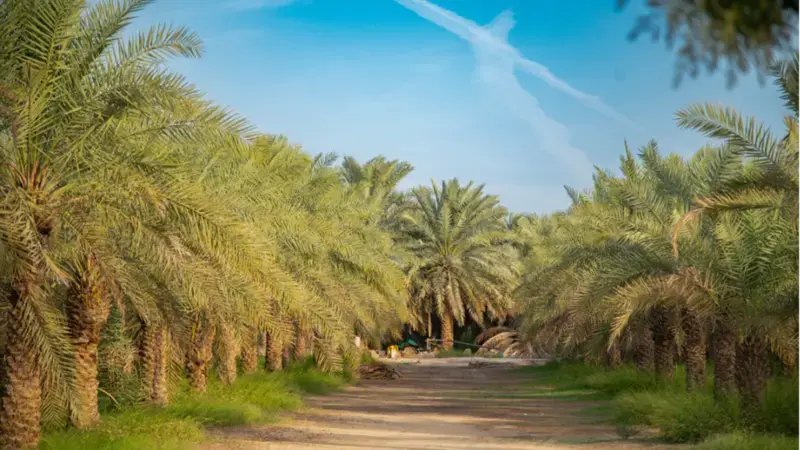
To most eyes, deserts look like the end of the line for agriculture - too dry to grow, too hot to handle, and too degraded to offer much promise. But that assumption is being overturned by a science-driven rethink of agriculture in places long considered beyond saving.
Across the drylands of the Middle East, North Africa, and Sub-Saharan Africa, as well as Central and South Asia, temperatures are soaring, water is becoming more scarce, and saline soils are making growing food a constant battle. But researchers, farmers, and innovators are rewriting that story through ICARDA’s Integrated Desert Farming Systems (IDFS).
What Makes IDFS Different?
IDFS isn’t a single technology or crop; it’s a holistic systems-level approach to sustainable agriculture in arid and degraded environments. It combines protected farming techniques like net houses and hydroponics with cultivation of resilient annual and perennial crops including, food, vegetables, forage, and fruit , fish and livestock which tolerates heat, salinity, and water stress. It restores degraded lands through strategic use of crop, land, and water resources, including tree, pasture and managed grazing, while strengthening value chains for date palms and other perennial crops. Water is treated as a precious asset to be captured, reused, and desalinated using rainwater harvesting, solar power and agrivoltaics. Soil health is rebuilt through regenerative practices that return dust back into living earth. Nothing goes to waste: farm by-products are recycled through composting, aquaponics, and nutrient recovery. With the support of drones, sensors, and AI, decisions are more informed and efficient than ever before. At the center of it all are people, especially women and youth, who gain new skills, start businesses, and lead the shift to sustainable livelihoods in drylands.
A Living Laboratory for Resilience
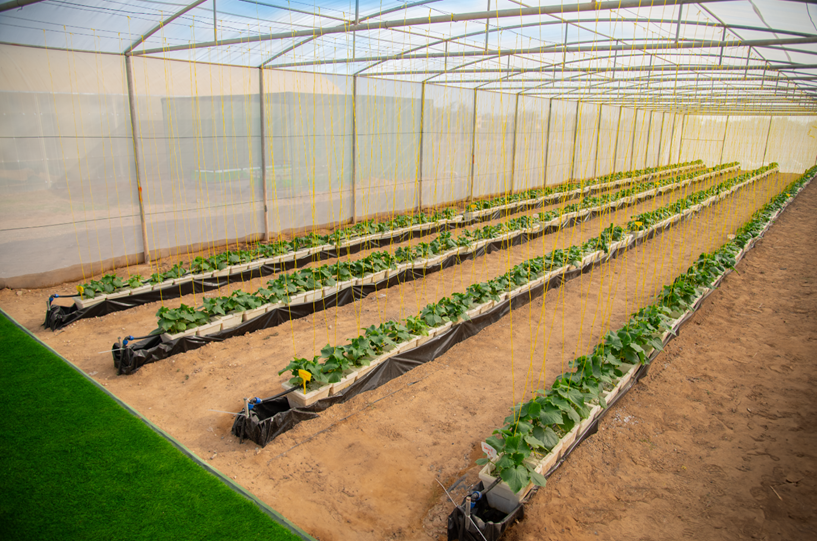
In these dry zones, every drop counts. That’s why ICARDA and its partners have developed a range of climate-smart technologies designed to stretch water further, boost yields, and reduce environmental footprints.
For example, net houses, structures made from insect-proof mesh that cool naturally without relying on energy-intensive systems, are redefining what's possible in desert agriculture. When combined with Root Zone Cooling (RZC), which uses solar-powered chilled water to maintain root temperatures at a steady 25°C even as external temperatures soar above 42°C, crops like cucumbers have thrived through the harsh summer months. In the UAE, even during the hottest months of the year, this setup sustained cucumber production through mid-June, yielding 3.3 kg/m², which is well above the regional average for early May. In Oman, production extended into early August, reaching 8.3 kg/m².
Even without any mechanical cooling, net houses with RZC delivered cucumber yields of 6.32 kg/m², statistically comparable to the 6.95 kg/m² achieved in conventionally cooled greenhouses. The system also delivered significant gains in efficiency: a 78% increase in water productivity, a 38% reduction in establishment costs, 27% lower operational costs, 10% less depreciation, and a 14% rise in net income. All while reducing carbon dioxide emissions by nearly five metric tons per season.
Soilless Success
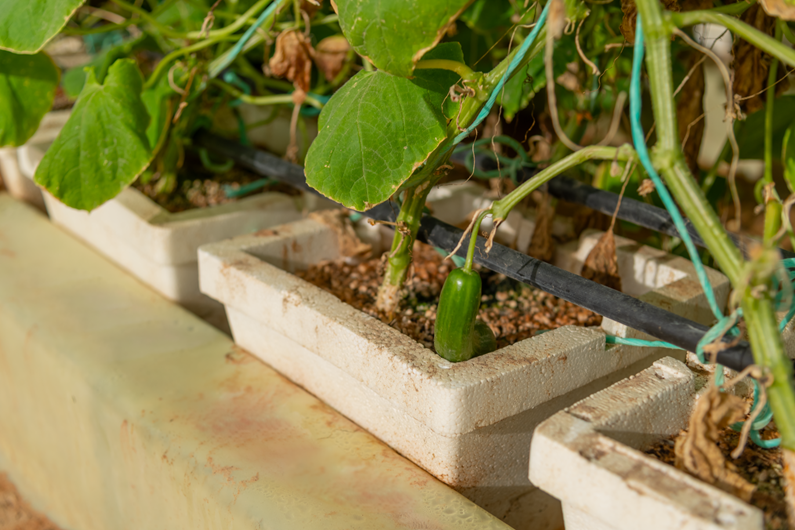
In a world running out of fertile soil, hydroponics offers an elegant solution. By growing crops without soil and reusing every drop of nutrient-rich water, this technique reduces waste and delivers exceptional efficiency.
In ICARDA’s trials across the Arabian Peninsula Region countries, for example, tomato plants produced 48 kg/m³ compared to just 7 kg/m³ in conventional soil-based systems, nearly seven times more per cubic meter of water than conventional systems. When combined with root zone cooling, even delicate crops like cucumbers flourished in desert heat.
Solar Smarts for Off-Grid Farmers
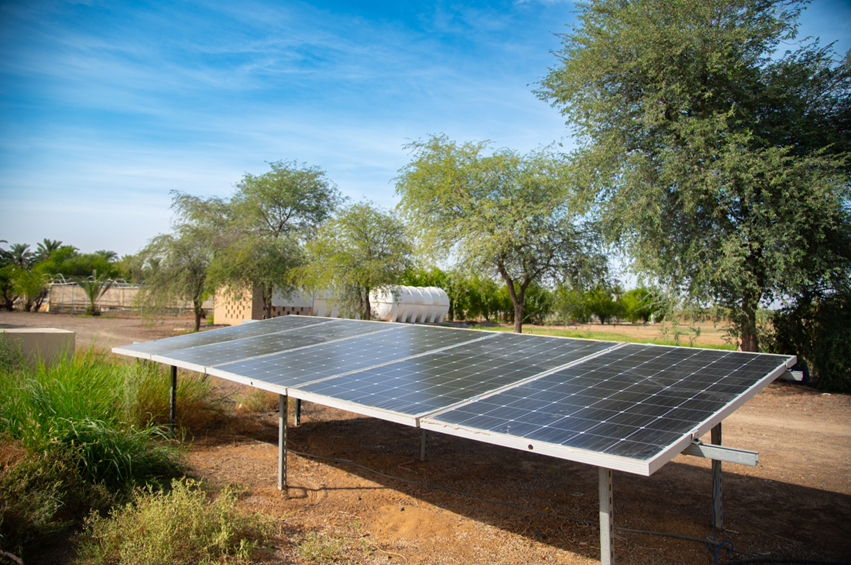
Desert farming needs power, but that doesn’t mean more diesel. With ultra-low-energy (ULE) drip irrigation systems, co-developed with MIT, water flows at a pressure of just 15 kPa (0.15 bar), reducing pumping needs by 80% and making it feasible for even small, off-grid farmers to operate using solar energy.
In areas where electricity access is unreliable or expensive, IDFS trials introduced an innovative AC/DC hybrid solar system that powers both irrigation and root zone cooling. The system alternates between solar and grid electricity, ensuring uninterrupted operation while prioritizing renewable energy. In cucumber production, net houses equipped with this setup used only 300 kWh per crop cycle, compared to 6,950 kWh in conventional greenhouses, achieving a 95.6% reduction in energy use.
The system resulted in major cost savings in the UAE: AED 288 saved per crop cycle under subsidized tariffs, up to AED 4 per square meter annually in local conditions, and AED 38 per square meter under average global electricity prices. On top of that, each structure avoids emitting 4.7 metric tons of carbon dioxide per season, making this not just a cost-effective solution, but climate-smart as well.
Crops Designed to Survive and Thrive
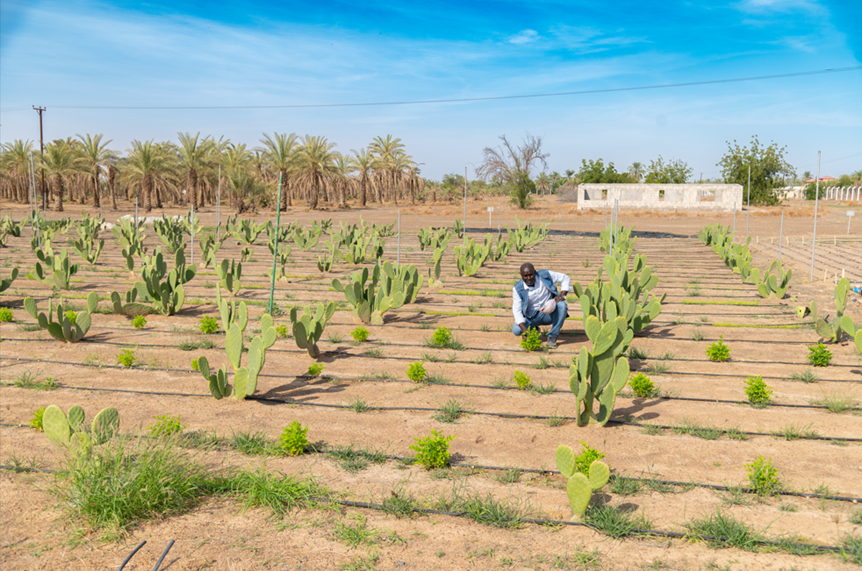
Hardware is only half the story. The plants themselves need to withstand extreme salinity, heat, and drought.
Through years of field testing, ICARDA has identified a suite of food and forage crops that can do just that: barley, quinoa, sorghum, pearl millet, finger millet, and cowpea, along with forage crops and shrubs including cactus, forage barley, oat, triticale, fodder millet, forage pea, sorghum-sudan grass, vetch, grasspea, clover, alfalfa, atriplex, moringa, leucaena, napier grass, sulla, clitoria, and cenchrus grass for their adaptability and performance. These crops not only survive where others fail; they regenerate soil, feed animals, and form the backbone of integrated crop-livestock systems.
Livestock Meets Landscape
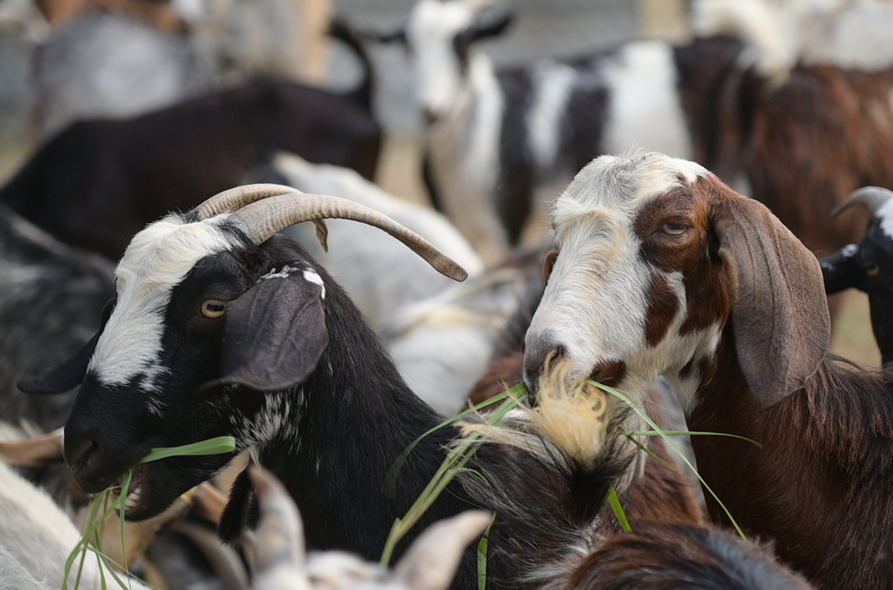
Livestock is often seen as part of the problem in drylands, contributing to overgrazing and degradation. But in IDFS, they’re part of the solution.
Agrosilvopastoral systems, those that combine trees, forage, and rotational grazing, are helping bring degraded rangelands back to life. By timing grazing to mimic natural herd patterns, regenerative grazing based on high-intensity, short-duration grazing minimizes animal selectivity, breaks down oxidized plant material to reduce fire risk, disrupts soil crusts, and enhances seedling germination from the soil seed bank.
In Tunisia, for example, ICARDA and governmental institutions such as Direction Générale des Forêts (DGF) and the community-based organizations (GDA) are working with communities and government institutions to introduce drought-tolerant native forage and make use of recycled water, restoring productivity without straining freshwater reserves.
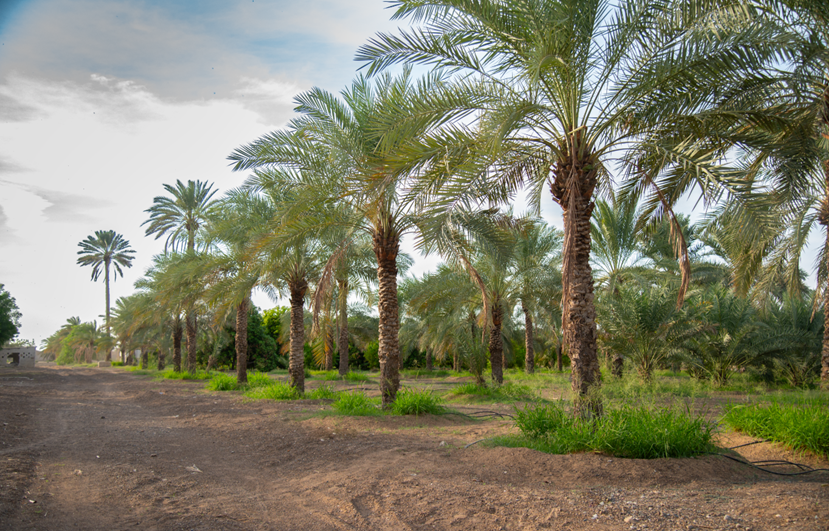
Date palms have anchored desert economies for centuries, but they too face mounting pressures, from pests like the Red Palm Weevil to poor irrigation practices. Here, data comes to the rescue.
Using crop models like APSIM and AquaCrop, ICARDA supports growers by simulating crop yields under varying soil, water, and climate conditions. Long-term simulations across 181 farms in the UAE revealed sizable yield gaps, 6.5 t/ha for Khalas and 5 t/ha for Lulu date palm varieties. These gaps can be substantially narrowed by optimizing nitrogen fertilizer application up to 150 kg/ha and by avoiding irrigation when soil plant-available water exceeds 60–70%, leading to more efficient water and nutrient use and significant yield improvements. In UAE, this approach contributed to the development of the ‘Agriculture Master Plan of Abu Dhabi’, where ICARDA used crop simulations to test the performance of 51 crops, helping the government decide what to plant, where, and how to do it sustainably.
Even more promising are oasis-based agroforestry systems, where date palms are integrated with legumes and fruit trees. These multi-layered farms improve water use efficiency, enhance biodiversity, and offer diversified incomes, all on the same patch of land.
Innovating Water Itself
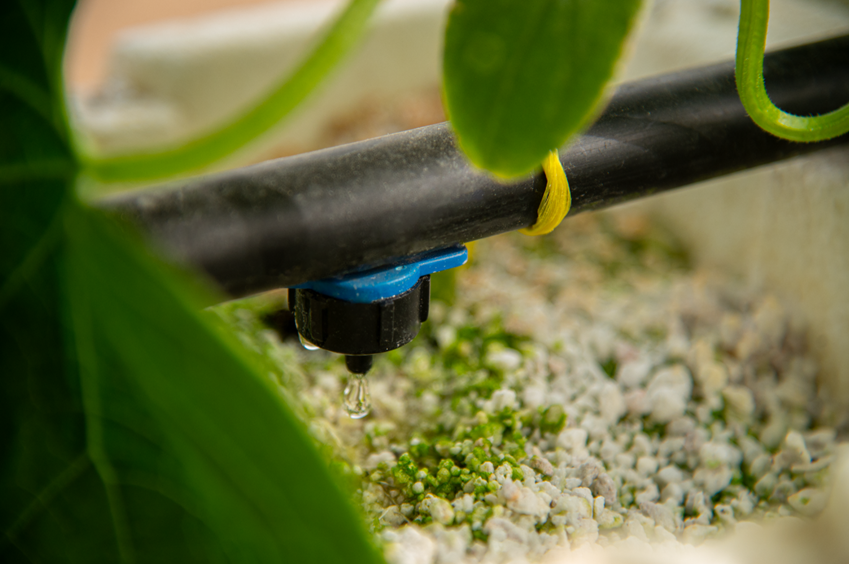
When water is this scarce, innovation has to go beyond saving it; it has to reimagine where it comes from. In addition to the ULE drippers, the IDFS approach integrates advanced water harvesting techniques like rooftop and structural systems that capture rain and condensation runoff, channeling these precious resources into protected cultivation to reduce groundwater reliance.
Agrivoltaic systems, combining solar panels with crops, generate renewable energy while shading plants to cut evapotranspiration and boost water-use efficiency. Meanwhile, the safe reuse of treated wastewater in forage and landscaping sustains biomass yields, closes nutrient cycles, and offers a vital solution for arid regions facing extreme freshwater scarcity.
Healing the Soil
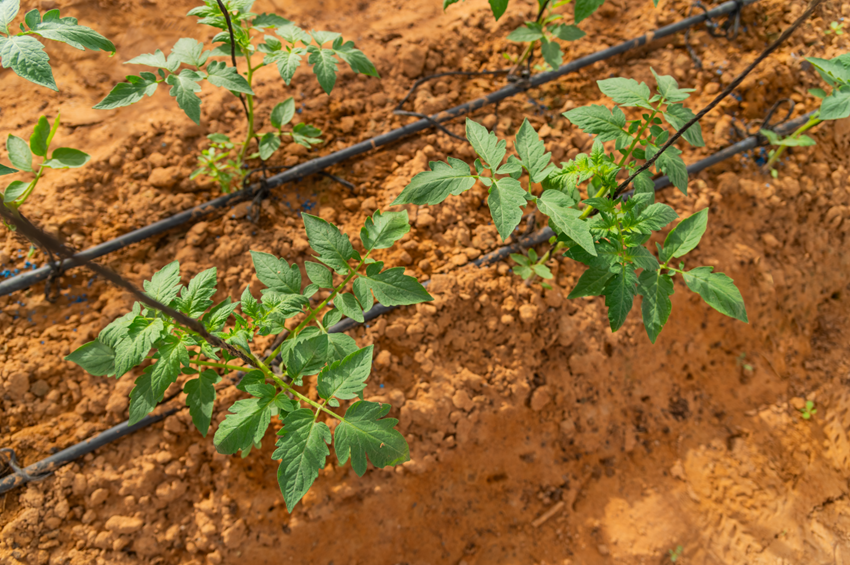
Desert soils are often seen as lifeless. But under the IDFS model, they’re treated as living ecosystems by combining afforestation, desert greening, and regenerative soil management tailored to arid zones. Treated wastewater is effectively used to irrigate shelterbelts, landscape vegetation, and restored areas, reducing pressure on freshwater resources. Combined with organic soil amendments and conservation tillage, these practices slow erosion, enhance soil fertility, increase moisture retention, and rebuild biologically active soils, transforming degraded lands into resilient, productive ecosystems.
Zero Waste
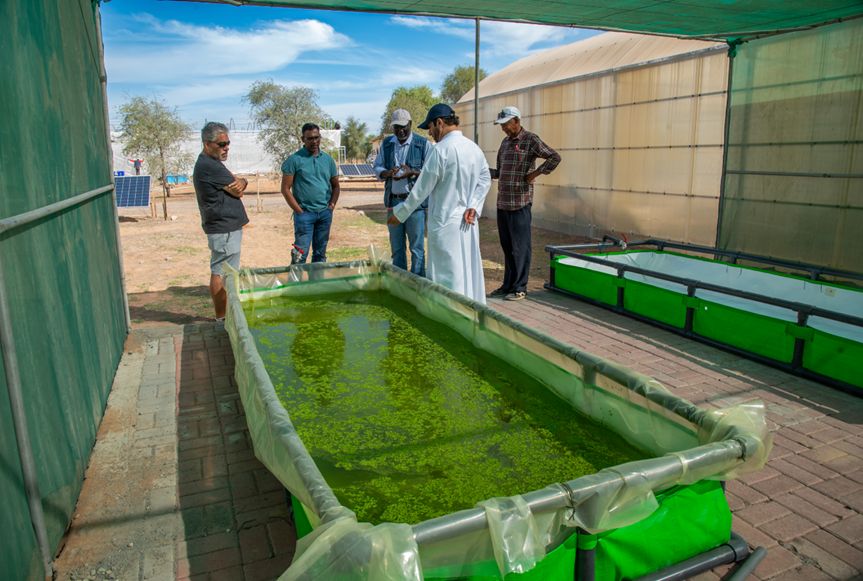
At the heart of it all lies a circular philosophy: nothing goes to waste. Crop residues and manure are composted into soil-enriching amendments, cutting down on synthetic fertilizers. Fish tanks feed plants in closed-loop aquaponic systems where water is recycled up to six times before reaching forage fields. Every input is repurposed, and every output has value. In these low-waste, high-efficiency systems, efficiency becomes resilience and resilience becomes survival.
Advanced and AI-based tools for Precision Agriculture
IDFS incorporates smart tools like drones, remote sensing, crop models, AI, and IoT to design farming systems that make the most of every drop and every hectare. These technologies offer real-time insights into crop health, soil moisture, evapotranspiration, and yield forecasts, helping tailor solutions to the realities of desert agriculture.
Desert Farming as a Blueprint for the Future
What’s happening in these arid lands is a vision for how we might live on a planet with shrinking resources and rising challenges. Beyond the promise for deserts, IDFS holds lessons for the world about working with, not against, nature, about precision over excess, and about the power of science, when paired with local knowledge, to turn the improbable into the essential.

